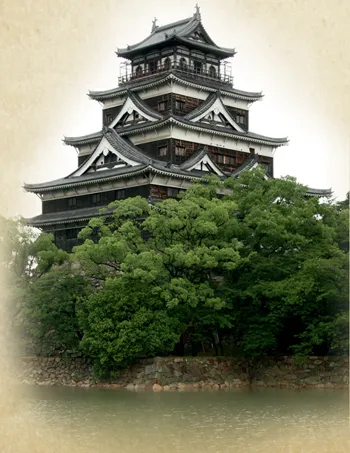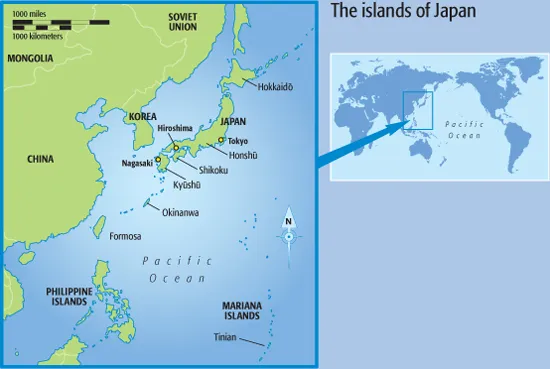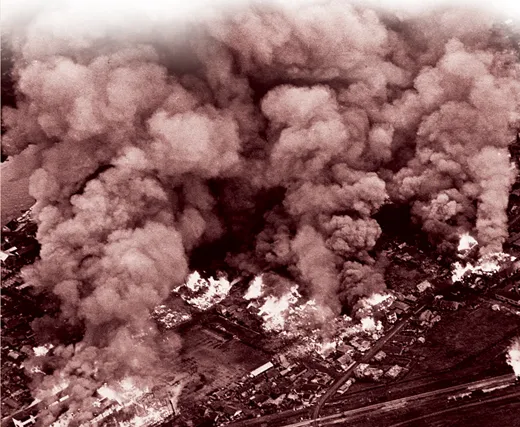
- English
- ePUB (mobile friendly)
- Available on iOS & Android
eBook - ePub
Hiroshima
About this book
Hiroshima tells the story of how the Japanese port city of Hiroshima came to be the target of the world's first nuclear attack.
Frequently asked questions
Yes, you can cancel anytime from the Subscription tab in your account settings on the Perlego website. Your subscription will stay active until the end of your current billing period. Learn how to cancel your subscription.
At the moment all of our mobile-responsive ePub books are available to download via the app. Most of our PDFs are also available to download and we're working on making the final remaining ones downloadable now. Learn more here.
Perlego offers two plans: Essential and Complete
- Essential is ideal for learners and professionals who enjoy exploring a wide range of subjects. Access the Essential Library with 800,000+ trusted titles and best-sellers across business, personal growth, and the humanities. Includes unlimited reading time and Standard Read Aloud voice.
- Complete: Perfect for advanced learners and researchers needing full, unrestricted access. Unlock 1.4M+ books across hundreds of subjects, including academic and specialized titles. The Complete Plan also includes advanced features like Premium Read Aloud and Research Assistant.
We are an online textbook subscription service, where you can get access to an entire online library for less than the price of a single book per month. With over 1 million books across 1000+ topics, we’ve got you covered! Learn more here.
Look out for the read-aloud symbol on your next book to see if you can listen to it. The read-aloud tool reads text aloud for you, highlighting the text as it is being read. You can pause it, speed it up and slow it down. Learn more here.
Yes! You can use the Perlego app on both iOS or Android devices to read anytime, anywhere — even offline. Perfect for commutes or when you’re on the go.
Please note we cannot support devices running on iOS 13 and Android 7 or earlier. Learn more about using the app.
Please note we cannot support devices running on iOS 13 and Android 7 or earlier. Learn more about using the app.
Yes, you can access Hiroshima by Stewart Ross, Britannica Digital Learning in PDF and/or ePUB format, as well as other popular books in History & World War II. We have over one million books available in our catalogue for you to explore.
Information
1 The Enola Gay

All clear for takeoff: the Enola Gay, a specially modified B-29 Super Fortress, stands poised on the runway at Tinian before setting out on the most momentous bombing mission in history.
Colonel Paul W. Tibbets Jr. was reckoned the best flier in America. He had even served as personal pilot to General Eisenhower, the future president. So it was no surprise that he was chosen to command one of the most secret missions the United States had ever undertaken.
Shortly after midnight on August 6, 1945, Tibbets and 11 hand-picked crew members clambered aboard the Enola Gay, a modified B-29 Super Fortress based on the Pacific island of Tinian. Tibbets had picked the plane personally, naming it after his mother back in Miami, Florida. Attached to the 509th Composite Group, it featured reduced armor and only one gunner, Sergeant Bob Caron. Bob sat out alone in the tail behind his twin. 50 caliber machine guns. Although he didn’t know it at the time, he would play a key role in the operation. His camera would be the only one to take live pictures of the action.
At around 2:45 a.m. the four Wright R3350 engines roared into life and hauled the heavily laden Enola Gay along the runway and into the air. Tibbets immediately headed northwest, toward southern Japan. Officially he alone knew the precise purpose of their mission. Behind him, however, Second Lieutenant Morris Jeppson also had a fair idea.
A physicist who had read a secondhand copy of a banned book on nuclear explosions, Jeppson realized that “Little Boy,” the 10-ton weapon hanging in the bay beneath them, was not just a “super powerful bomb,” as they had been told. The Enola Gay was carrying the world’s first atomic bomb. Its target was the city of Hiroshima.
2 The City of Hiroshima
To most people, the word Hiroshima means only one thing: the terrifying dawn of the nuclear age. The center of the city was totally destroyed by the bomb that the Enola Gay dropped. World War II ended shortly afterward when the Japanese accepted that they faced a weapon against which they had no defense. Untold thousands died in the blast and firestorm that followed, and for years thousands more continued to perish from the effects of radiation. The dark shadow of Hiroshima has hung over the world ever since, a shadow so terrifying that for almost 70 years no nation has dared use nuclear weapons in anger.
FACT FILE
Mori and Asano
The powerful nobleman Mori Terumoto, head of the Mori clan, founded the city of Hiroshima in 1598. He made it his clan headquarters and cemented his power with a new and impressive castle. Later, in the hands of the Asano clan, Hiroshima expanded and prospered. Asano rule ended in the mid-19th century, when the transformation into the modern industrial port began.

Hiroshima Castle, originally built in the 1590s, was obliterated by the nuclear attack of August 6, 1945. The reconstruction shown here was finished 13 years later.

In 1945, Hiroshima was one of the key ports of southern Japan. The city was home to around 43,000 soldiers ready to resist any Allied invasion. Estimates of the civilian population at the time of the Enola Gay raid vary from 255,000 to close on 400,000.
From castle to city
Japan is made up of more than 6,800 islands. Just four of them—Honshū, Hokkaidō, Kyūshū, and Shikoku—comprise some 97 percent of the country’s land area. The principal island is Honshū, or “Main State.” The seventh largest island in the world, it is bigger than Great Britain and only slightly smaller than Kansas. Along Honshū’s crowded southeastern coastline are most of Japan’s great cities: Tokyo, Kyoto, Osaka, and, at the southern end, Hiroshima.
Hiroshima, meaning “wide island,” was founded at the end of the 16th century by Mori Terumoto, a nobleman who built a castle there. Rapid expansion came in the 19th century, when Japan developed into an industrial nation. The sheltered coastal location was ideal for trade and, as railroads, factories, warehouses, and workshops sprang up around the excellent harbor, the city grew fast. Between 1889 and 1929, its population rose from 83,000 to 270,000, making it Japan’s seventh most populous city.
Military base
Hiroshima continued to flourish and its transportation system improved with the introduction of electric streetcars. As a result its business and shopping hub moved away from the old castle area toward the docks. Central planning brought new organization to the metropolitan area and the 1930s and early 1940s witnessed a renovation of the port and the use of land reclaimed from the sea.
At the same time, a more ominous development was taking place. From 1931 onward Hiroshima was an important military base. Barracks were constructed to house troops waiting to go abroad, first to serve in China, and then, during the 1940s, in the Japanese Empire. Supplies were kept there, too, and a communications center was established. It was these military installations that made the city a priority target for the Enola Gay’s devastating attack.
During World War II, many Japanese observers wondered why, when Tokyo and other large cities were attacked so frequently, Hiroshima was left almost unscathed. The reason was horrifyingly simple. Before August 6, 1945, an atomic bomb had been tested only over a desert. No one knew for certain what the effects of exploding one over a city would be. The Hiroshima bombing, therefore, would be an experiment to answer the scientists’ questions. Because they wanted their data as clear as possible, they needed a target free from damage by conventional bombing. So, like mice in a laboratory, Hiroshima and its people were left relatively unharmed so that the true effects of “the big one” could be measured.

The busy main street of Hiroshima’s Kawaya-cho (now Hondori) district in about 1930. It was at the heart of the city’s commercial area.
Dreadful data
The bomb’s detonation provided the scientists and the military with the data they sought. The watching world picked it up, too. After the explosion, Hiroshima was, to all intents and purposes, no more. An entire city had been destroyed. A few days later, another city, Nagasaki, went the same way. Had Japan not surrendered, the unspeakable process might have continued until all the great cities of Japan had been reduced to rubble. The irony is that, had this happened, the United States would still not have been able to invade Japan because the radiation levels there would have been fatal to its own troops as well as the Japanese.
The lessons of what had taken place at Hiroshima were soon learned. Human beings, the intelligent apes that had in a few thousand years mastered the planet, now had the means to wipe themselves out in a few minutes. International relations would never be the same. Warfare would never be the same. The genie that had been released from the bottle could never be put back: A brilliant flash, a thunderous shock wave, and a giant mushroom of dust over Hiroshima had changed the world for ever.
VOICES
A highly secret matter
Dear Mr. President,
I think it is very important that I should have a talk with you as soon as possible on a highly secret matter. I mentioned it to you shortly after you took office but have not urged it since on account of the pressure you have been under. It, however, has such a bearing on our present foreign relations and has such an important effect upon all my thinking in this field that I think you ought to know about it without much further delay.
Faithfully yours,
Henry Stimson
Secretary of War
A letter from Secretary of War Henry Stimson to President Harry Truman about the existence of the A-bomb, April 24, 1945

A conventional strike: the port city of Kushiro Hokka is engulfed in smoke and flames after a raid from carrier-based planes of the US Third Fleet on July 14, 1945.
3 The Pacific War
The bomb...
Table of contents
- Cover Page
- Title Page
- Copyright Page
- Contents
- 1: The Enola Gay
- 2: The City of Hiroshima
- 3: The Pacific War
- 4: Decision Time
- 5: The Attack
- 6: Nagasaki and Surrender
- 7: The Nuclear Age
- 8: Lest We Forget
- Glossary
- Further Information
- Index